Shoofly
Ancient Hohokam - Sinagua Ruins
Payson, Arizona
Travels & Tours
Pictures, Photos, Images, & Reviews.
April 11, 2009

Google Map To Shoofly Ancient Mogollon - Hohokam - Sinagua Ruins, Payson, Arizona.
View Larger Map
The Shoofly Ruins, Rock Circle Walls
Create The Circle Of Trees!

Click On Any Of The Following Links By Amazon.Com
For Books, & Videos About About Arizona Native American Ruins. No Obligation!
Click On Any Of The Following Links By Amazon.Com
For Books, & Videos About Touring Arizona. No Obligation!

Audrey DeLange Taking Us Into The
Shoofly Ancient Mogollon, Hohokam - Sinagua Ruins, Payson, Arizona. 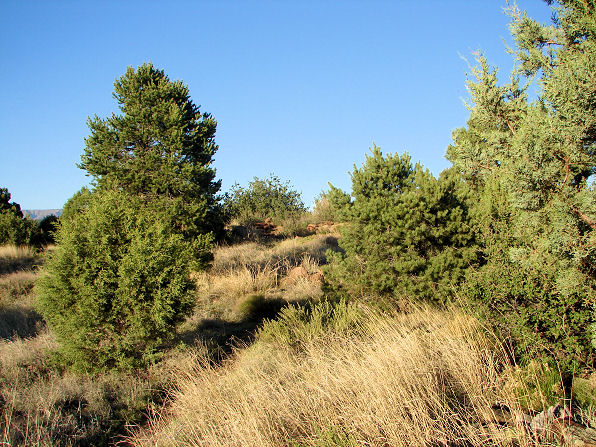
Location Of Two Story Apartments.
Shoofly Ancient Mogollon, Hohokam - Sinagua Ruins, Payson, Arizona. 
27 Square Rooms Located Here
Shoofly Ancient Mogollon, Hohokam - Sinagua Ruins, Payson, Arizona. 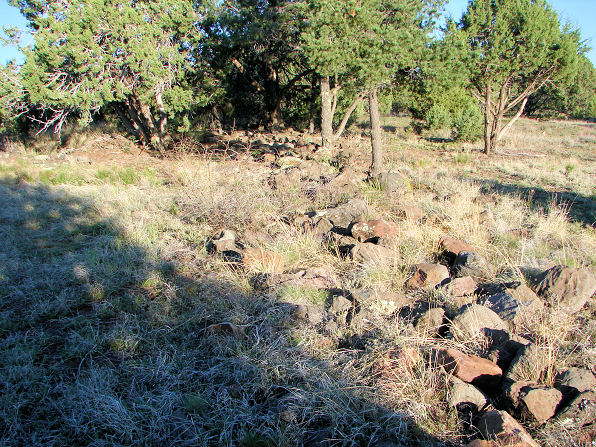
Shoofly Ancient Mogollon, Hohokam - Sinagua Ruins, Payson, Arizona. 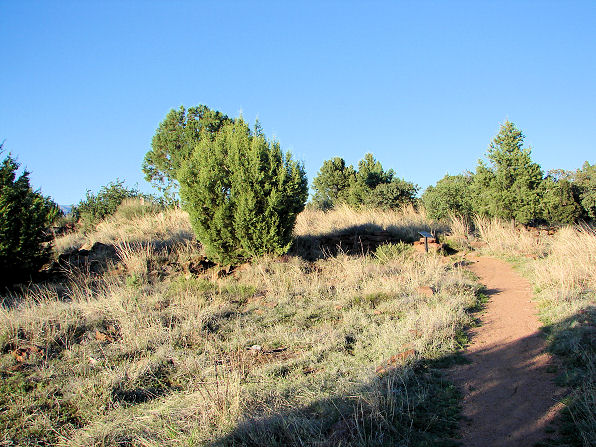
Shoofly Ancient Mogollon, Hohokam - Sinagua Ruins, Payson, Arizona. 
27 Square Rooms Located Here
Shoofly Ancient Mogollon, Hohokam - Sinagua Ruins, Payson, Arizona. 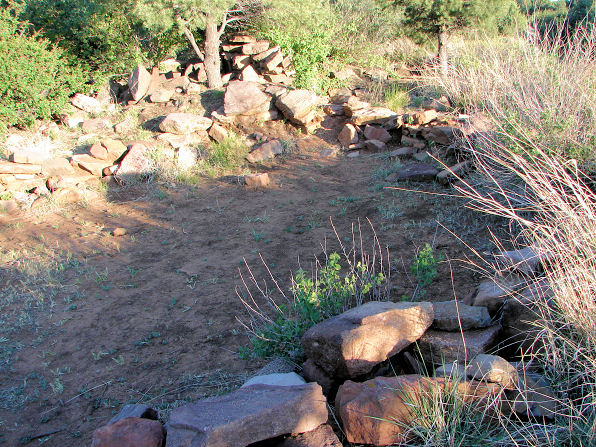
27 Square Rooms Located Here
Shoofly Ancient Mogollon, Hohokam - Sinagua Ruins, Payson, Arizona.
Shoofly Village Ruins is located about 4 miles north of downtown Payson, Arizona, via Arizona Route 87, or about 90 miles north of downtown Phoenix. We visited this ruins on May 11, 2009.
From downtown Payson, you drive about 4 miles north via Arizona Route 87, to Houston Mesa Road and then turn east. The ruins is located about 3.5 miles to the east of Arizona Route 87 and it is located on the south side of Houston Mesa Road. This is about one mile from the Mesa del Caballo subdivision. Do not turn into the subdivision. Stay on Houston Mesa Road. Look to the south and you will see the entrance into the Shoofly Village Ruins. It is well signed. Picnic tables, ramadas, and toilet facilities are provided. There is a large parking lot that RV campers could easily use. However the toilets were almost totally ruined before the time of our visit. The site is being vandalized and this site is not being maintained by the Tonto National Forest Service. It care reminds us of some of the very worst sites we have ever visited in third world countries. It�s a shame, that those who are supposed to protect and preserve the Shoofly Village Ruin; simply aren't doing their jobs. We hope that we soon can report that this situation has changed! Shoofly Village Ruins is listed on the National Register of Historic Places.
Shoofly Village Ruins is accessible for the handicapped; with paved trails. But remember, the restrooms are totally broken at this time. We would suggest visiting the ruins with someone to assist you, as it is still primitive. It is close to town so help could arrive easily, if needed. Our cell phones worked in this area.
The Shoofly Village Ruins believed to have been occupied between A.D. 1,000-1,250. It is located at the top or the northern edge of Houston Mesa. The location of the Shoofly Village Ruins is in a juniper, pine, scrub oak, chaparral, grasslands area at about 5,245 feet elevation.
Based solely upon the weather of Payson, Arizona today, the weather in the time of Shoofly Villages occupation probably was the same. The warmest month of the year is July has an average maximum temperature of 92.90 degrees Fahrenheit, while the coldest month of the year is December with an average minimum temperature of 25.20 degrees Fahrenheit.
The annual average precipitation at Payson is 22.07 Inches. This rainfall is fairly evenly distributed throughout the year. The wettest month of the year is during August, with an average rainfall of 2.97 Inches.
This would have easily supported the growing of native crops and the maintenance of wildlife.
Remember: A drought could have caused the people to move, seeking better conditions. This is what is thought to have occurred by several archaeologists who have studied these people.
Audrey and I disagree with that hypotheses, since these people had already lived in the area for over 100 years during the drought time period.
Here is a brief statement concerning the ancient history of the Payson area:
The people who lived in the Rim country were known as Mogollons, Ancient Ones, or Bunheads. They were surrounded by the Sinagua to the north, the Anasazi to the northeast, the Mogollon to the southeast, the Salado to the south, and the Hohokam to the southwest.
Archaeologists have divided the occupation of the greater Payson area (basin) into four periods.
1. The pre-ceramic period from about (10,000 B.C. to A.D. 700):
Little is known about this period, except for evidence that big-game hunters (Clovis) once slew bison and mammoths throughout many parts of the southwest. A large arrowhead (Clovis point) was found south of Payson in 1977 suggesting that these bison and mammoth hunts also occurred in the Payson area.
2. The Hohokam occupation or (2nd period) which is fairly well documented and occurring from about A.D. 800 - 1,000. It is characterized by "house-in-a-pit" sites.
3. The third period is from A.D. 1,000 - 1,150 when dramatic changes took place that are typified by small villages; such as the Shoofly Village. It is said that we should also include the Risser Ranch Ruins, and Deer Jaw Ruins in this grouping, both are also located in the general area of Payson.
4. The fourth period, about A.D. 1,150 - 1,250 (or perhaps as early as 1,300) is typified by larger villages. However near the end of this fourth period, it is believed that the sites were in the process of being abandoned and were completely totally vacant by A.D. 1,350. Then, the consensus of the archaeologists is that the entire area was unpopulated until about A.D. 1600. However, some archaeologists believe that the Yavapai may have occupied this area after its abandonment until the Apaches arrived at the end of the 16th century. Some evidence exists suggesting the Yavapai were also in the Globe-Miami area (about 90 miles south) when the Spanish arrived. The previous inhabitants of the Globe-Miami area were the Salado and they had also moved away. It is unclear whether they did so on their own or if they were forced out by the Yavapai.
The rock wall outlines of 79 structures are still visible at Shoofly Village. At the center of Shoofly Village there is evidence that a larger structure once existed containing a building with 26 rooms, averaging about 44.730 square yards each. Part of this building is thought to be two stories high. Around this main building there were 39 smaller structures in clusters and there were 14 other structures in the general area with at least one of these structures having a curved wall. The entire village compound was approximately 3.75 acres in size and it was enclosed by a small rock "fence". The "fence" can easily be seen in the aerial map photo on our web page as it is now supporting the growing trees, which are rooted among it's rocks.
Full scale excavations were conducted by Dr. Charles Redman from Arizona State University as a field school program over a four year period.
It is thought that the people who once occupied the Shoofly Village are similar to those who once occupied the Flagstaff, Arizona area, and also to the Sinaqua from the Upper Verde Valley.
Some differences were noted.
It is believed the Shoofly Village residents had, or once had, Hohokam ties. As both farmers and hunters, they were able to grow corn, beans, squash, and perhaps cotton. They also hunted deer, elk, rabbits, rodents, and birds, including migratory fowl such as geese, and ducks. It is also believed they raised wild turkeys which are indigenous to the Payson area.
They made brown clay pottery, usually of a jar-shape which were not decorated. They did have decorated pottery which was believed to have come from the Flagstaff and Little Colorado River areas. The arrowheads that were found were very small; however arrowhead hunters over the years may have already removed the larger ones.
Some small figurines, stone pendants and quartz crystals were found but very few "trade items" were discovered.
SPECIAL NOTE:
The really neat thing about this ruins is that it looks a lot like the ruins that you will naturally find as you are hiking across the country. For the most part it looks unexcavated and natural.
Audrey and George DeLange have examined well over 200 ruins in Arizona; as well as in Mexico, Central America, Peru, and other areas of the United States. It is always more exciting for us to find and explore ruins that are in a pristine, unexplored state.
This is truly one that you can experience in ALMOST the same way! We highly recommend it, just for that experience!
If you are planning to visit the Payson area to tour the Shoofly Village Site and you are coming from outside of Arizona, you could fly into Phoenix and then rent a car. Payson is about 90 miles north of downtown Phoenix, & the Shoofly Village is about 4 miles north of downtown Payson, Arizona, via Arizona Route 87.
There are hotels and motels in Payson. If you need a place to stay; Priceline.com can arrange that too.
We have some links to Priceline.com on this page since they can arrange all of your air flights, hotels and car.
You may need some outdoor clothing and equipment, if you plan to visit the Sedona area to tour the Shoofly Village Site.
We have some links to Altrec on this page since they are a good online source for outdoor gear.
We of course, appreciate your use of the advertising on our pages, since it helps us to keep this page active.

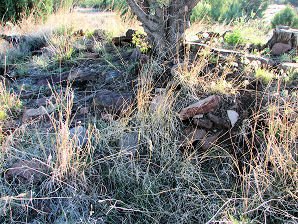
27 Square Rooms Located Here 27 Square Rooms Located Here 
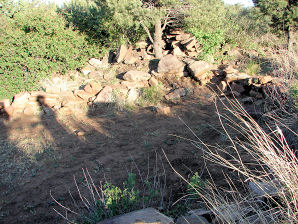
27 Square Rooms Located Here 27 Square Rooms Located Here

We Are Proud Of Our SafeSurf Rating!

Click On Any Of The Following Links By Amazon.Com
For Books, & Videos About About Arizona Native American Ruins. No Obligation!
Click On Any Of The Following Links By Amazon.Com
For Books, & Videos About Touring Arizona. No Obligation!
To Mogollon Rim Road
General "George" Cook Historical Recreational Trail
Back To Arizona Tours Page
Back To DeLange Home Page

April 11, 2009

 |
| Audrey DeLange Taking Us Into The Shoofly Ancient Mogollon, Hohokam - Sinagua Ruins, Payson, Arizona. |
|---|
 |
| Location Of Two Story Apartments. Shoofly Ancient Mogollon, Hohokam - Sinagua Ruins, Payson, Arizona. |
 |
| 27 Square Rooms Located Here Shoofly Ancient Mogollon, Hohokam - Sinagua Ruins, Payson, Arizona. |
 |
| Shoofly Ancient Mogollon, Hohokam - Sinagua Ruins, Payson, Arizona. |
 |
| Shoofly Ancient Mogollon, Hohokam - Sinagua Ruins, Payson, Arizona. |
 |
| 27 Square Rooms Located Here Shoofly Ancient Mogollon, Hohokam - Sinagua Ruins, Payson, Arizona. |
 |
| 27 Square Rooms Located Here Shoofly Ancient Mogollon, Hohokam - Sinagua Ruins, Payson, Arizona. |
Shoofly Village Ruins is located about 4 miles north of downtown Payson, Arizona, via Arizona Route 87, or about 90 miles north of downtown Phoenix. We visited this ruins on May 11, 2009. From downtown Payson, you drive about 4 miles north via Arizona Route 87, to Houston Mesa Road and then turn east. The ruins is located about 3.5 miles to the east of Arizona Route 87 and it is located on the south side of Houston Mesa Road. This is about one mile from the Mesa del Caballo subdivision. Do not turn into the subdivision. Stay on Houston Mesa Road. Look to the south and you will see the entrance into the Shoofly Village Ruins. It is well signed. Picnic tables, ramadas, and toilet facilities are provided. There is a large parking lot that RV campers could easily use. However the toilets were almost totally ruined before the time of our visit. The site is being vandalized and this site is not being maintained by the Tonto National Forest Service. It care reminds us of some of the very worst sites we have ever visited in third world countries. It�s a shame, that those who are supposed to protect and preserve the Shoofly Village Ruin; simply aren't doing their jobs. We hope that we soon can report that this situation has changed! Shoofly Village Ruins is listed on the National Register of Historic Places. Shoofly Village Ruins is accessible for the handicapped; with paved trails. But remember, the restrooms are totally broken at this time. We would suggest visiting the ruins with someone to assist you, as it is still primitive. It is close to town so help could arrive easily, if needed. Our cell phones worked in this area. The Shoofly Village Ruins believed to have been occupied between A.D. 1,000-1,250. It is located at the top or the northern edge of Houston Mesa. The location of the Shoofly Village Ruins is in a juniper, pine, scrub oak, chaparral, grasslands area at about 5,245 feet elevation. Based solely upon the weather of Payson, Arizona today, the weather in the time of Shoofly Villages occupation probably was the same. The warmest month of the year is July has an average maximum temperature of 92.90 degrees Fahrenheit, while the coldest month of the year is December with an average minimum temperature of 25.20 degrees Fahrenheit. The annual average precipitation at Payson is 22.07 Inches. This rainfall is fairly evenly distributed throughout the year. The wettest month of the year is during August, with an average rainfall of 2.97 Inches. This would have easily supported the growing of native crops and the maintenance of wildlife. Remember: A drought could have caused the people to move, seeking better conditions. This is what is thought to have occurred by several archaeologists who have studied these people. Audrey and I disagree with that hypotheses, since these people had already lived in the area for over 100 years during the drought time period. Here is a brief statement concerning the ancient history of the Payson area: The people who lived in the Rim country were known as Mogollons, Ancient Ones, or Bunheads. They were surrounded by the Sinagua to the north, the Anasazi to the northeast, the Mogollon to the southeast, the Salado to the south, and the Hohokam to the southwest. Archaeologists have divided the occupation of the greater Payson area (basin) into four periods.
1. The pre-ceramic period from about (10,000 B.C. to A.D. 700):
2. The Hohokam occupation or (2nd period) which is fairly well documented and occurring from about A.D. 800 - 1,000. It is characterized by "house-in-a-pit" sites. 3. The third period is from A.D. 1,000 - 1,150 when dramatic changes took place that are typified by small villages; such as the Shoofly Village. It is said that we should also include the Risser Ranch Ruins, and Deer Jaw Ruins in this grouping, both are also located in the general area of Payson. 4. The fourth period, about A.D. 1,150 - 1,250 (or perhaps as early as 1,300) is typified by larger villages. However near the end of this fourth period, it is believed that the sites were in the process of being abandoned and were completely totally vacant by A.D. 1,350. Then, the consensus of the archaeologists is that the entire area was unpopulated until about A.D. 1600. However, some archaeologists believe that the Yavapai may have occupied this area after its abandonment until the Apaches arrived at the end of the 16th century. Some evidence exists suggesting the Yavapai were also in the Globe-Miami area (about 90 miles south) when the Spanish arrived. The previous inhabitants of the Globe-Miami area were the Salado and they had also moved away. It is unclear whether they did so on their own or if they were forced out by the Yavapai. The rock wall outlines of 79 structures are still visible at Shoofly Village. At the center of Shoofly Village there is evidence that a larger structure once existed containing a building with 26 rooms, averaging about 44.730 square yards each. Part of this building is thought to be two stories high. Around this main building there were 39 smaller structures in clusters and there were 14 other structures in the general area with at least one of these structures having a curved wall. The entire village compound was approximately 3.75 acres in size and it was enclosed by a small rock "fence". The "fence" can easily be seen in the aerial map photo on our web page as it is now supporting the growing trees, which are rooted among it's rocks. Full scale excavations were conducted by Dr. Charles Redman from Arizona State University as a field school program over a four year period. It is thought that the people who once occupied the Shoofly Village are similar to those who once occupied the Flagstaff, Arizona area, and also to the Sinaqua from the Upper Verde Valley. Some differences were noted. It is believed the Shoofly Village residents had, or once had, Hohokam ties. As both farmers and hunters, they were able to grow corn, beans, squash, and perhaps cotton. They also hunted deer, elk, rabbits, rodents, and birds, including migratory fowl such as geese, and ducks. It is also believed they raised wild turkeys which are indigenous to the Payson area. They made brown clay pottery, usually of a jar-shape which were not decorated. They did have decorated pottery which was believed to have come from the Flagstaff and Little Colorado River areas. The arrowheads that were found were very small; however arrowhead hunters over the years may have already removed the larger ones. Some small figurines, stone pendants and quartz crystals were found but very few "trade items" were discovered.
SPECIAL NOTE:
Audrey and George DeLange have examined well over 200 ruins in Arizona; as well as in Mexico, Central America, Peru, and other areas of the United States. It is always more exciting for us to find and explore ruins that are in a pristine, unexplored state. This is truly one that you can experience in ALMOST the same way! We highly recommend it, just for that experience!
|
If you are planning to visit the Payson area to tour the Shoofly Village Site and you are coming from outside of Arizona, you could fly into Phoenix and then rent a car. Payson is about 90 miles north of downtown Phoenix, & the Shoofly Village is about 4 miles north of downtown Payson, Arizona, via Arizona Route 87. There are hotels and motels in Payson. If you need a place to stay; Priceline.com can arrange that too. We have some links to Priceline.com on this page since they can arrange all of your air flights, hotels and car. You may need some outdoor clothing and equipment, if you plan to visit the Sedona area to tour the Shoofly Village Site. We have some links to Altrec on this page since they are a good online source for outdoor gear. We of course, appreciate your use of the advertising on our pages, since it helps us to keep this page active.
|
 |  |
| 27 Square Rooms Located Here | 27 Square Rooms Located Here |
|---|---|
 |  |
| 27 Square Rooms Located Here | 27 Square Rooms Located Here |

We Are Proud Of Our SafeSurf Rating!

Click On Any Of The Following Links By Amazon.Com
For Books, & Videos About About Arizona Native American Ruins. No Obligation!
Click On Any Of The Following Links By Amazon.Com
For Books, & Videos About Touring Arizona. No Obligation!
| To Mogollon Rim Road General "George" Cook Historical Recreational Trail
|
| Back To Arizona Tours Page
|
| Back To DeLange Home Page
|




